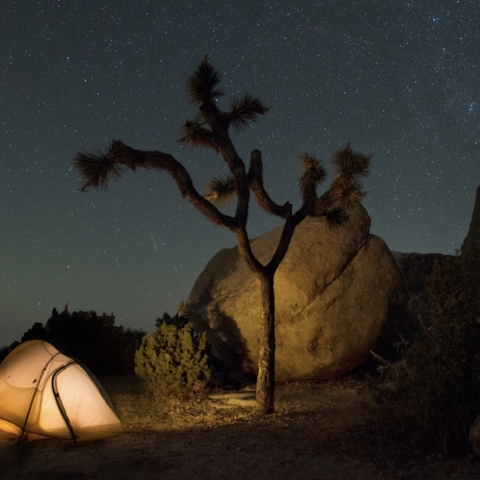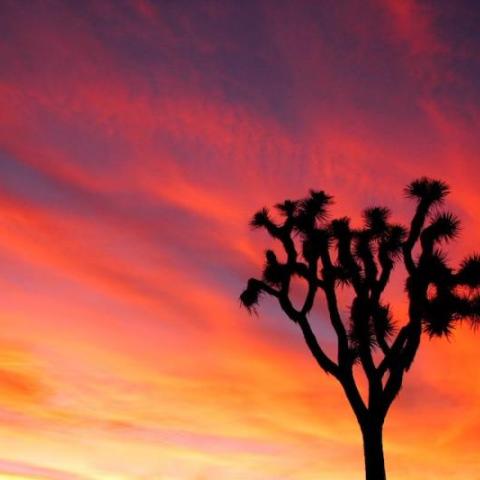Editor's note: The following is an unedited release from the National Park Service.
The National Park Service released its finding of no significant impact on the effects of adjusting the boundary of Joshua Tree National Park to include lands in the Eagle Mountain area of Riverside County. The Park Service recommends adding more than 20,000 acres of federal, state and private lands to the boundary of Joshua Tree National Park.
Implementing the agency’s recommendation, or selected alternative, will require additional agency or Congressional action. The Park Service’s finding follows a study and environmental assessment conducted jointly by the Park Service and the Bureau of Land Management to look at the feasibility of adding lands to the national park. The agencies also evaluated the potential effects of transferring administrative jurisdiction of BLM lands to the Park Service, which would afford greater protection of the area’s natural characteristics and could offer new opportunities for public enjoyment.
Recent studies have documented the particular importance of the Eagle Mountain area for bighorn sheep and desert tortoise populations. The study area contains prehistoric and historic resources that expand on the national park’s cultural themes; and contains areas important for maintaining Joshua Tree’s wilderness values.
The proposed boundary adjustment would encompass lands the Park Service has determined are most feasible for its administration, the majority of which consist of about 17,670 acres of federally owned and managed lands. The remainder would include about 2,000 acres of private property and another 335 acres of state schools lands. These non-federally owned lands could become a part of Joshua Tree if the property owners choose to sell or donate them to the Park Service.
The draft environmental assessment that detailed the Park Service’s preferred alternative was released in March 2016 for public comment. The recommendation in the finding of no significant impact is essentially the preferred alternative identified in the draft documents, slightly modified to incorporate feedback received during the public comment period. The majority of the more than 9,000 comments reviewed supported the boundary adjustment.
Another 8,600 acres of land were found to be suitable for addition to the national park, however current uses and ownership issues make infeasible for the Park Service to manage them. They may be considered for inclusion in the park boundary in the future if their current or planned uses change and they are made available to the agency. These lands include the Federal Energy Regulatory Commission-licensed area for Eagle Mountain Pumped Storage Hydroelectric Project and lands associated with the Eagle Mountain Mine and Townsite. The Park Service’s selected alternative will not affect the hydroelectric project or its existing rights of way.
The Department of the Interior approved the first step to transfer federal public lands to the Park Service by approving a proposed withdrawal application covering up to 22,500 acres in October 2016. Comments on the proposed withdrawal and land transfer will be accepted through Feb. 16, 2017. A public meeting to discuss the proposed withdrawal and potential land transfer will be held on Jan. 18, 2017 in Palm Desert. For more information please visit https://parkplanning.nps.gov/eaglemountain.
The Park Service and BLM will evaluate public comments on the proposed withdrawal. BLM will then issue its decision regarding the potential transfer of lands to the Park Service. If the Department of the Interior determines that it is appropriate to proceed with the withdrawal and transfer, then it will authorize the publication of a public land order in the Federal Register directing the transfer.
Joshua Tree National Park was established to “preserve and protect the scenic, natural, and cultural resources representative of the Colorado and Mojave deserts’ rich biological and geological diversity, cultural history, wilderness, recreational values, and outstanding opportunities for education and scientific study.”
The area of study included approximately 31,500 acres of land in the Eagle Mountains and Chuckwalla Valley, most of which includes public lands managed by the Bureau of Land Management. Bounded to the south, west, and north by Joshua Tree National Park, the eastern border of the study area is defined by the Colorado River Aqueduct, which roughly formed the original Joshua Tree National Monument boundary established in 1936.
Originally part of the park when designated in 1936, the study area was later removed for mineral extraction activities in 1950. Major mining activities in the study area ceased in 1983. In 1989, the area was proposed for a landfill. After decades of challenges and litigation, the landfill proposal was withdrawn in 2013. The Eagle Mountain area remains a key building block for landscape-scale conservation in the California desert. However, lands within the area and surrounding region continue to be open to various development proposals that could affect protection of the fragile desert ecosystems.



 Support Essential Coverage of Essential Places
Support Essential Coverage of Essential Places






